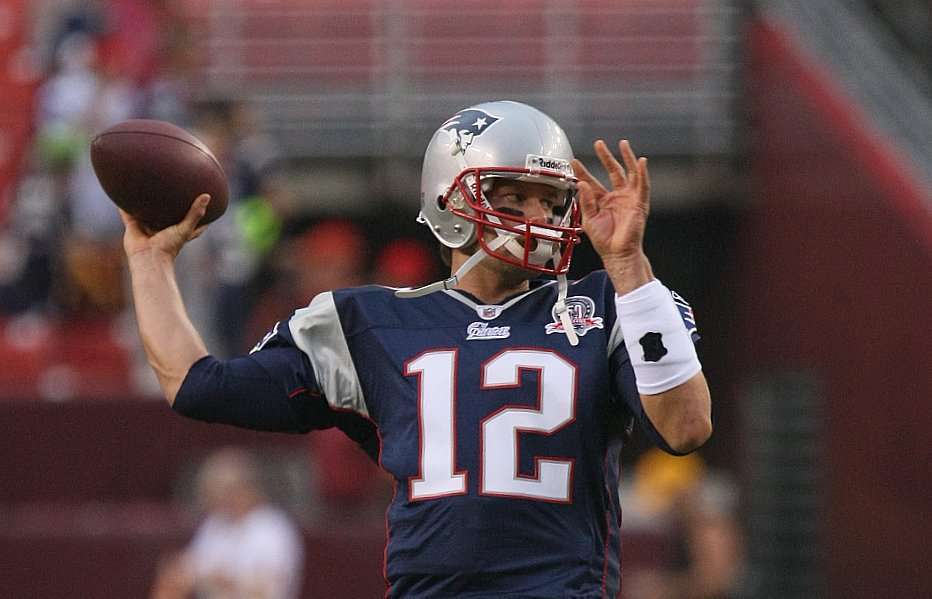Three Biggest Point Spread Upsets In Super Bowl History
During the 1980s and 1990s, the Super Bowl was considered one of the least exciting and most predictable sports championships. This trend peaked in the mid-90s, when the average Super Bowl spread rose to 13.5 between 1994 and 1998.
This trend shifted in Super Bowl XXXII, when the Broncos rode a temporarily blinded Terrell Davis to an unlikely ring. Since then, favorites have underperformed against the spread, while underdogs are flourishing. Two of the three largest point spread upsets would take place over the proceeding decade, following the example of Joe Namath and the Jets during the NFL’s embryonic years.
Keep these games in mind when you’re making your Super Bowl futures wagers during the playoffs.
New England Patriots Defeat St. Louis Rams
Super Bowl XXXVI – Patriots +14
The 2002 Super Bowl marked a transition for the NFL. This was the first Super Bowl played in February, designated as a National Special Security Event because of 9/11 the year before. A then-unknown Tom Brady played in his first Super Bowl as a massive underdog against the Rams, who featured QB Kurt Warner and RB Marshall Faulk – two of the greatest offensive wizards at their position.
St. Louis kicked the crap out of the league with their historically terrific offense, and everyone expected the same before kickoff. Instead, New England played strong defense, intercepting Warner twice and recovering a fumble. Kurt would finish with 365 passing yards, throwing a single TD, but a trio of turnovers made the difference.
The Patriots defense gave Brady a chance to make a game-winning drive at the end of the fourth quarter. After marching the Pats downfield, Adam Vinatieri hit the winning field goal, the first time a Super Bowl was decided by the final play of the game.
New York Giants Defeat New England Patriots
Super Bowl XLII – Giants +14
Six years after pulling off the second biggest point spread upset in the history of the big game, the tables turned on the Patriots when they clashed with the New York Giants. Prior to Super Bowl XLII, bookies gave slim odds for a Giants win, slapping a 14-point spread on behalf of the heavily-favored Patriots.
Instead of a blowout, this game turned into a slugfest, with neither team gaining quick, easy yards. A total of ten points were scored over three quarters, with the Giants down by four. Manning gave New York the lead early in the fourth and Brady responded with a TD inside of three minutes, which looked to be the winning score.
Instead, Manning put together an amazing two-minute drive, including the incredible “helmet catch”, finishing with a TD pass to Plaxico Burress. The Pats would have a chance to march back downfield and get into field goal range, but the Giants elite defense held firm. New York gave Brady and the Patriots a taste of their own medicine, pulling off an upset which was more unlikely than New England’s amazing win against the St. Louis Rams.
New York Jets Defeat Baltimore Colts
Super Bowl III – Colts +18
In 1969, bookies didn’t have access to the same tech that sportsbooks currently enjoy, but you still have to wonder what they were thinking when they anointed the Colts as 18-point favorites. Perhaps the hype went to their heads – after all, this was the first time that the championship was referred to as the Super Bowl.
During the first few years of the AFL and NFL merger, AFL squads were considered patently inferior after the Packers easily won the first couple of championship games. Despite a huge spread, an inebriated Joe Namath guaranteed a victory for the Jets when a Colts fan exclaimed that Baltimore would easily defeat New York.
Incredibly, Joe fully backed up his audacious promise by dominating Super Bowl III, leading the Jets to a 16-7 victory. Namath ate more than 16 minutes off the clock during four scoring drives, while Baltimore would finally notch a TD with a few minutes left.
“The Guarantee” remains one of the most incredible stories in North American sports, especially considering that Namath and the Jets hustled the biggest point spread upset in Super Bowl lore.
Photo Credit: Keith Allison, Flickr C.C. 2.0



